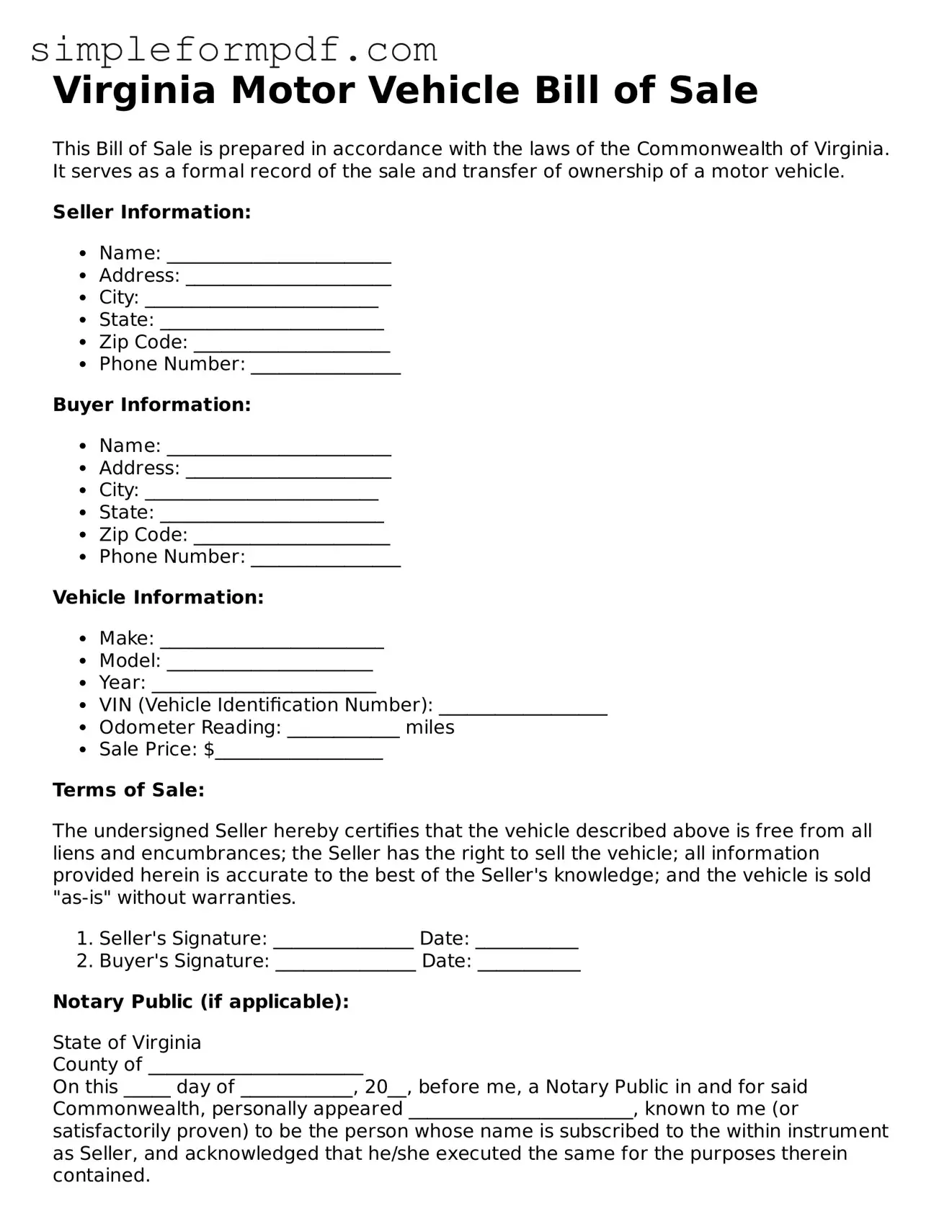Virginia Motor Vehicle Bill of Sale
This Bill of Sale is prepared in accordance with the laws of the Commonwealth of Virginia. It serves as a formal record of the sale and transfer of ownership of a motor vehicle.
Seller Information:
- Name: ________________________
- Address: ______________________
- City: _________________________
- State: ________________________
- Zip Code: _____________________
- Phone Number: ________________
Buyer Information:
- Name: ________________________
- Address: ______________________
- City: _________________________
- State: ________________________
- Zip Code: _____________________
- Phone Number: ________________
Vehicle Information:
- Make: ________________________
- Model: ______________________
- Year: ________________________
- VIN (Vehicle Identification Number): __________________
- Odometer Reading: ____________ miles
- Sale Price: $__________________
Terms of Sale:
The undersigned Seller hereby certifies that the vehicle described above is free from all liens and encumbrances; the Seller has the right to sell the vehicle; all information provided herein is accurate to the best of the Seller's knowledge; and the vehicle is sold "as-is" without warranties.
- Seller's Signature: _______________ Date: ___________
- Buyer's Signature: _______________ Date: ___________
Notary Public (if applicable):
State of Virginia
County of _______________________
On this _____ day of ____________, 20__, before me, a Notary Public in and for said Commonwealth, personally appeared ________________________, known to me (or satisfactorily proven) to be the person whose name is subscribed to the within instrument as Seller, and acknowledged that he/she executed the same for the purposes therein contained.
Notary Public Signature: ______________________
My commission expires: ______________
